Author: Mendicheva Marina Ammonova.
Materials and equipment:
- pillow-roller;
- Cockles (4 pcs.);
- chop;
- English pins;
- Stand;
- threads;
- beads, fats;
- a piece of wire - a thirteantor.
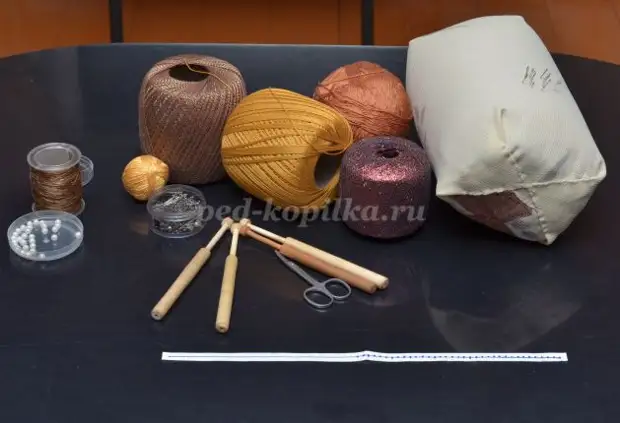
Cockcline Weaving - Hairathi from Pleet
Introduction to the topic.
Lace is a special openwork ornament created by various overwhelming threads and existing independently, without any woven base. Lace can be classified by the type of manufacture. There is a mass of techniques and methods of knitting and weaving lace. Here are the main:
• Manual embroidered lace / embroidery /
• Needle lace / sewing /
• Ribbon lace / sewing /
• Basons / weaving /
• Coplushechny lace / weaving /
• Macrame / Assembly /
• Frivitis / Picture /
• Crochet lace / looping /
• Lace knitted knitting / looping /
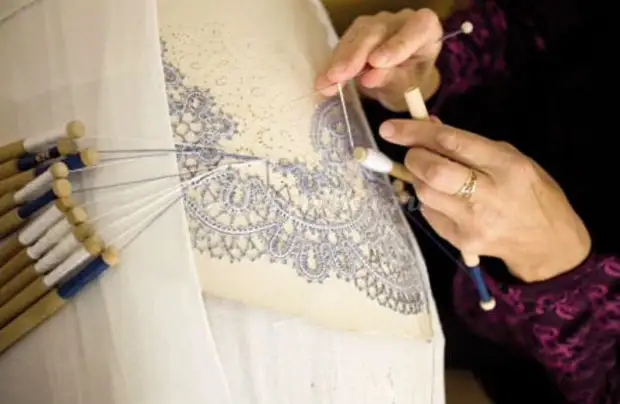
Lace feet on Coclushki- The art of weaving an openwork pattern from the threads with small wooden stools-tanks began to develop only after the appearance of metal pins in the XVI century. The proof of this is the numerous monuments of wicker lace, its images on portraits and paintings by artists. From this time (1557) - the chips on parchment are preserved.
European lace-art. It appeared at the turn of the XV-XVI centuries in Italy. Then the center of the lace movement moved to Flanders, in particular to Brussels, where it began to make very thin, airbrum lace from linen threads of special quality. Required for them flax grew only in the fields of Bramte.
In the XVII century, in France, a diverse types of lace arose with the development of weaving technology, depending on the place of creation, "Brussels", "Malin"
"Valencienna".
According to the assumption of the Honored Artist of the Russian Federation D.A. The Smirnaya art of weaving the color numerical measuring lace arose in ancient Russia, on Ryazanchin, approximately in the XII century. A peculiar "pins" when weaving these lace were spikes of plants, fish bones, wooden sticks, etc. And to the XV century in Ryazanchin, laquetters were developed on Coclushki.
Of the other sources in Russia, weaving lace came from Western Europe in the 19th century. In the royal workshops, laces were made in the form of firmware from gold and silver threads (sliced thin wire), painted in crimson, green, blue color. Decorated with sequins lace, asterisks. Lace, seed and a novel pearl, lace with Poham were known. Silk lace and simple linen filament. Expensive lace was beautifully combined with braching fabrics. Such lace was a sign of wealth and luxury. It was used to decorate the parade royal, boyars and church clothing, items of secular eccuracy. Numerous magnificent samples of these laces are still stored in museums.
A perceived from Western Europe in the XVII century, Russian la sawing not only retained and developed the best traditions of masters of European countries, but also became a genuine national artistic phenomenon, whose independence is expressed in the wealth of color, the diversity of technical techniques and, mainly, the visual nature of the ornament characteristic of everything Russian folk art.
In each area, famous for the art of weaving lace, along with the common techniques of obtaining the openwork pattern, developed their features of the ornament, color, technical methods for creating a pattern. With the division of lace on the technique of execution on the pair, numerical, the coupling is distinguished by both the place of production - Vologda, Yeletskoy, Vyatka or Kirovskoye, Ryazan or Mikhailovskoye and many others.
Today, the stylization under gold returned to the fashion - from the "Lurex", "Metanit" threads, gorgeous lace are born. But even from the most simple threads - cotton, moulin, ducts can create wonderful products. This is the special beauty of lace-haired - cheap, affordable material, tools and as a result of rich luxury things.
But do not forget that it is a long, very painstaking work, so lace products are very expensive.
Practical part.
1. To hide the thread on the coup. The main rule: a coup in the right hand, the thread in the left and goes from the bottom of the cough.
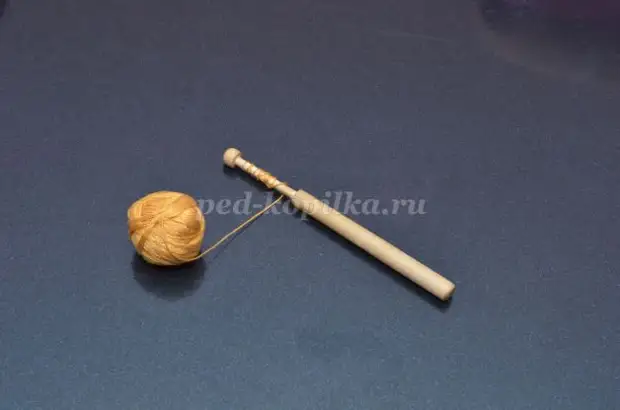
2. It is necessary to hide a thread on one bracy, then half wind to another. When will be ready, fix the thread of the loop.
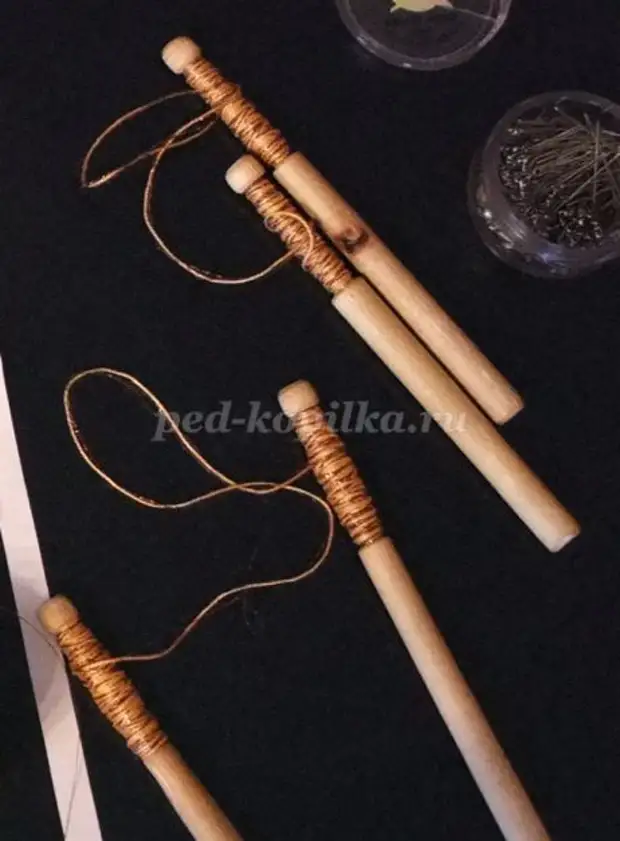
3. Pillow-roller set to the stand and pinch the pin with pins. Both pairs of undercuts hang on the first needle. The length of the thread from the needle to the talkers is the same, approximately 7 - 10 cm.
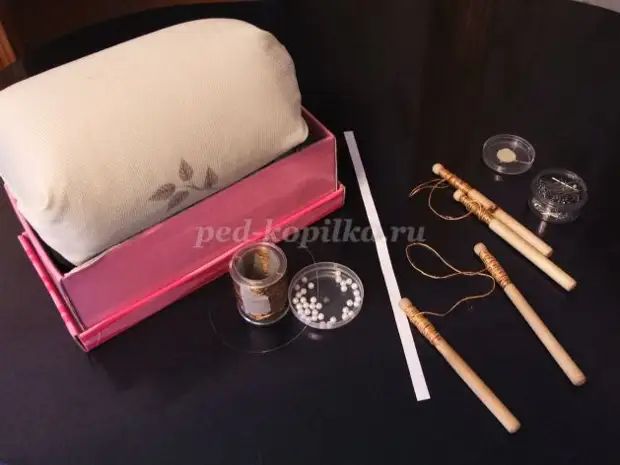
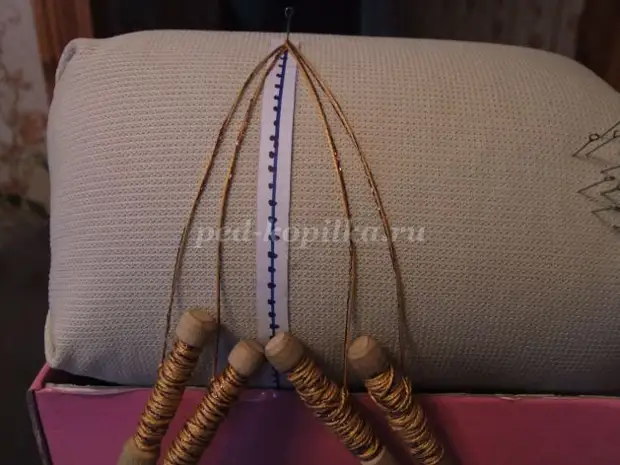
4. Essay - the inner coughs change places. The inner coup is the right hand to put under the inner cough of the left hand.
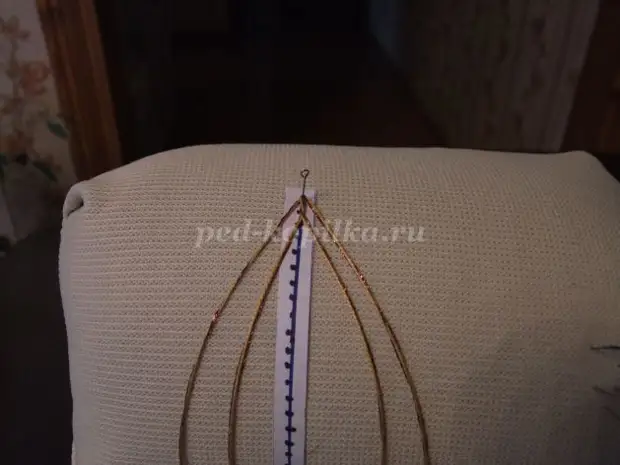
5. Transfer - change the bumps in each hand. Cocktle on the right side (in the right and in the left hand) shifting on the left side, we help with a thumb.
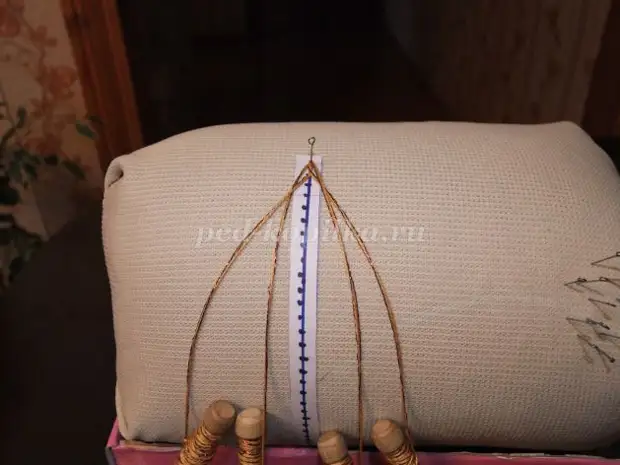
6. Next again, we do the soss and turned out to be complete. We put the needle between pairs of threads (make a ships).
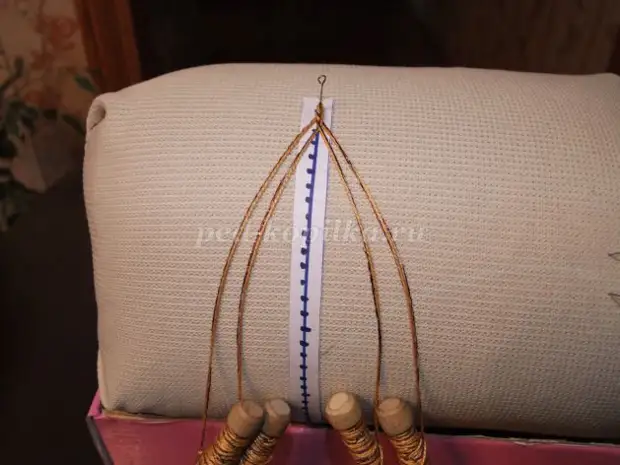
After 10 needles, starting with the second, you can pull out and use them for further weaving.
Pleets weep to the place of finding beads (note that the beginning of the tip is the end of the rope).
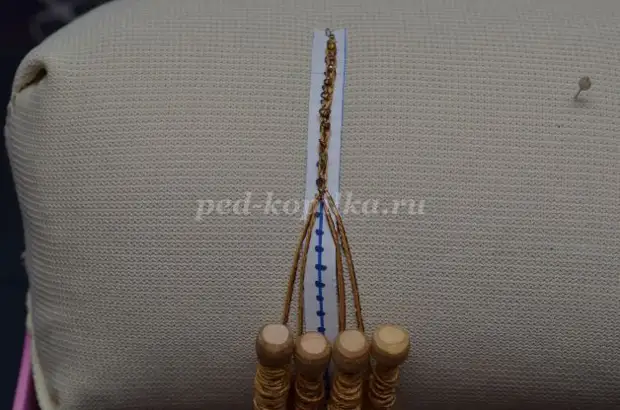
7. We engage the homemade thread, we ride a bead and pull the loop through the bead.
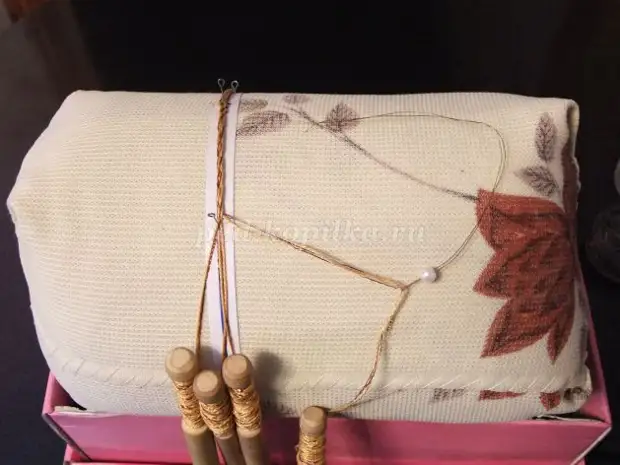
8. Insert the second coup in the resulting loop, we remove the nickname and pull the loop back. The bead is fixed.
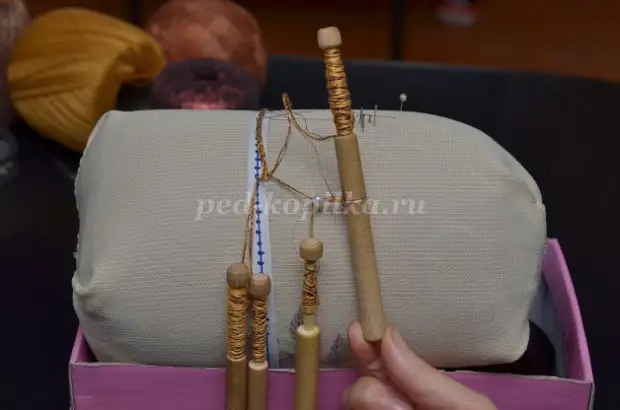
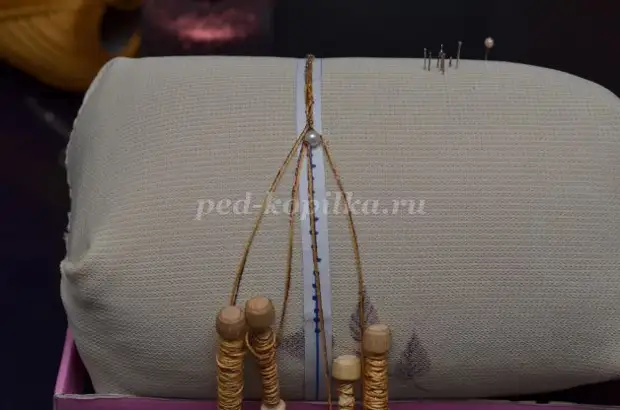
9. We continue the weaving until the end of the rope length.
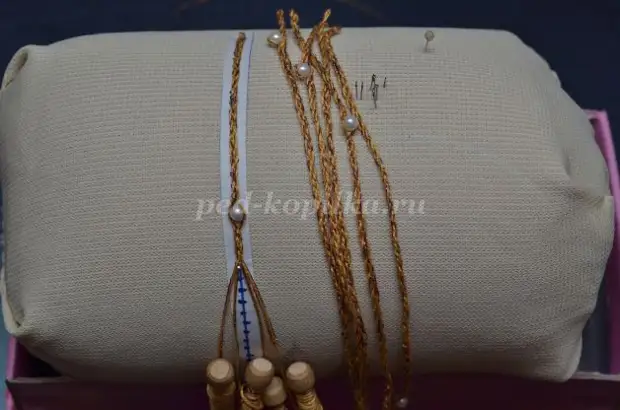
10. Tie a nodule, fix the second and cut the thread.
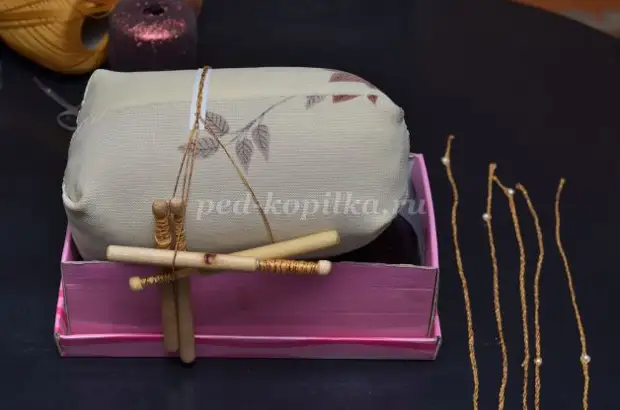
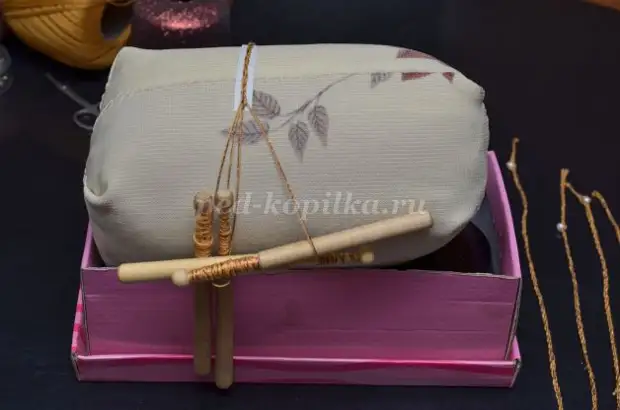
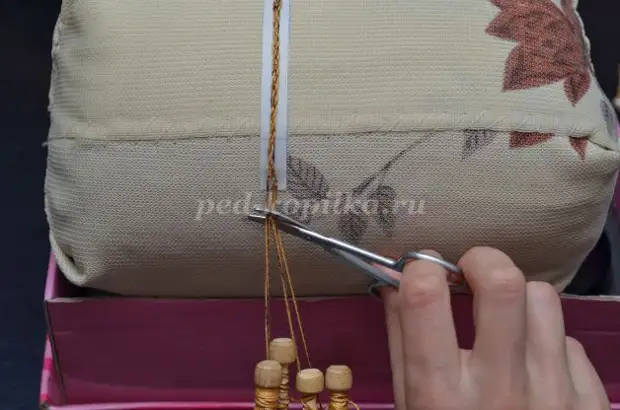
11. The product is ready. For hairstyles "African pigtails" it is necessary to weave 35 - 40 ropes.
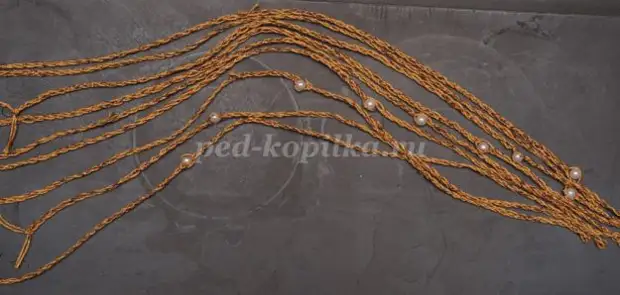
A source
